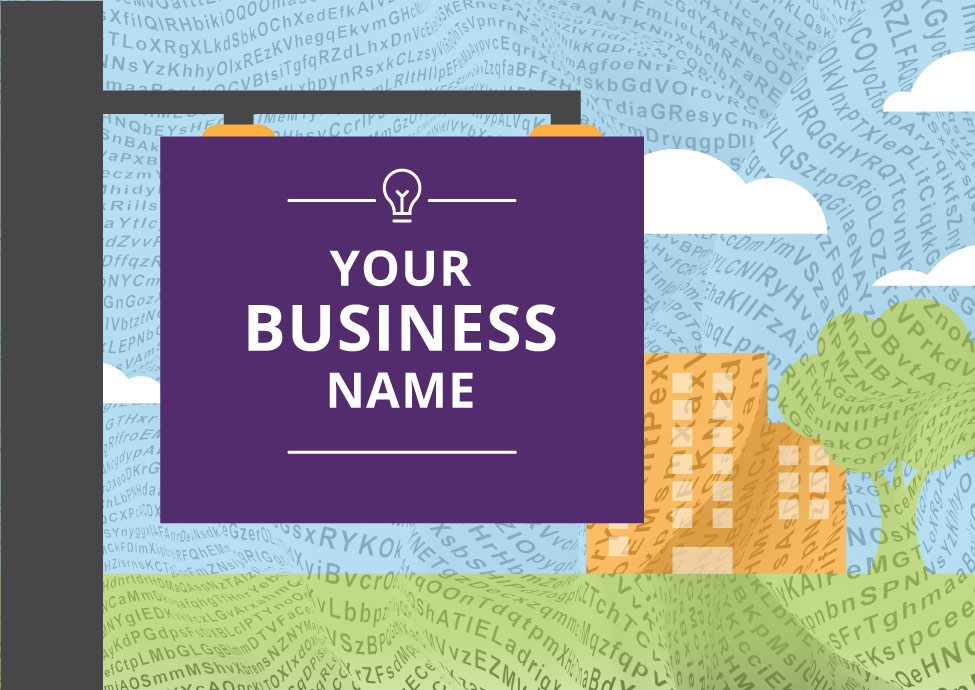Naming your Business, Product or Service

Shakespeare asked, “What’s in a name?” Turns out…everything. How you arrive at a name for your new product or service makes all the difference in the world.
Naming your business, product or service is important, but it’s not always easy to get right. Customers will easily remember a powerful and distinctive name. The wrong name will be forgotten.
Your business name has the potential to set your brand apart and make it highly recognizable. You highlight your brand name in every communication with your audience and it is associated with your business’ reputation. With such a heavy responsibility, your business name needs to be more than some words and syllables thrown together.
The fundamentals of naming your business, product or service
1. Leave mediocrity behind and be different
Your first 50 ideas are the same ideas your competitors brainstormed. Keep experimenting to find your memorable, inspiring name.
2. Put your customer first
See the name from the perspective of the buyer. Naming, as with all marketing, is really about your customers.
3. KISS
Keep it super simple. Shorter is sweeter; it’s also easier to remember.
4. Say it out loud
It should sound good and be easy to pronounce. An awkward or off-putting name can steer your audience to your competitors.
5. Tell a story
Your name is the title of the unique and great story you’re about to tell. Think about how your name signals something new and how it will evoke your brand story.
6. Meet expectations
Remember, names set expectations in the minds of your audience, so be sure your brand delivers on them.
7. Do your research
Get your trademark lawyer involved to ensure the name can be used.
8. Be aware of cultural consequences
If the brand is international, take into account cultural and linguistic perspectives.
| Costly naming blunders |
|---|
| California Milk Processor Board’s “Got Milk” slogan translated as “Are you lactating?” in Spanish. |
| Pepsi’s “Come alive with the Pepsi generation” slogan translated as “Pepsi will bring your ancestors back from the dead” in Taiwan. |
| In Brazilian Portuguese, Ford’s “Pinto” translated as “tiny male genitals.” |
| “Coca-Cola” was first read as “Kekoukela,” which means “Bite the wax tadpole” or “female horse stuffed with wax” in China, depending on the dialect. |
| Schweppes “tonic water” translated as Schweppes Toilet Water in the Italian market. |
Findability in a digital landscape
The old naming maxims have served us well for 100 years: easy to remember, easy to understand and easy to say, like Aqua Velva, Crayola or Palmolive.
But Google has revolutionized the way we find goods and services. Think about the last time you craved a Brooklyn-style pizza in downtown Toronto. Chances are, you asked your device to lead the way.
Now, more than ever, how your customers use Google will determine whether or not they find your new product or service. It’s not about finding your customer so much as it’s about your customer finding you. The new naming maxim will be: “Easy to find.”
Searchable speaks to how your customers will find your new product or service. A recent analysis of Google searches revealed that the first three search hits had a 44.5 percent click-through rate combined. Have you considered search intent when naming your new product?
Creating easy-to-find names
1. Make it relevant
Using keywords for SEO optimization is an important way to help your customers find you.
2. Use search engines/tools
Using the latest tools, put SEO data to work for you; it’s a powerful method to build your new brand.
3. Don’t be ambiguous
Keep your product names category specific. Combine evocative with specific for a combo that actually helps generate leads.
4. Verify availability
Consider domain and social profile availability. If the exact name isn’t available, can you modify your brand name so that it is still distinctly recognizable?
Spinning great names
The best name brainstorming is founded on strategy that clarifies brand personality, audience and the competitive landscape. Pushing beyond the norm with numerous ideas, angles and wordplay all help when writing the perfect, unique name. Let’s not forget the value of artful alliterations, metaphors, free association and poetics. It takes creative thinking that goes deep and imagines the story that will unfold in the coming years. Over time, you should expand your brand story into a textural and powerful narrative told via your visual identity, colours, sounds, messages and images. But it all starts with your name.
Don’t be forgotten
It’s not easy to come up with an original name when it seems like all the good ones are taken. Yet, you can do it with some help from experts in strategic and creative exploration and research. Simple, unique and customer-focused names will set your brand apart from the competition.
With the right name, you can successfully express your brand essence in a concise, relevant and long-lasting way.
Tanja Groos, Founder and CEO, Mindspin® Studio Inc.
Tanja Groos is CEO Mindspin with more than 20 years of experience in branding and digital marketing. Her work has been published and awarded. Her leadership has tripled sales within a year, surpassed top industry competitors online, and enhanced brand credibility for her clients.
Follow Tanja on LinkedIn












